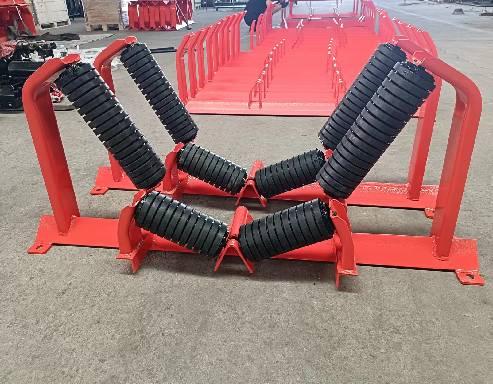 Afrikaans
Afrikaans  Albanian
Albanian  Amharic
Amharic  Arabic
Arabic  Armenian
Armenian  Azerbaijani
Azerbaijani  Basque
Basque  Belarusian
Belarusian  Bengali
Bengali  Bosnian
Bosnian  Bulgarian
Bulgarian  Catalan
Catalan  Cebuano
Cebuano  Corsican
Corsican  Croatian
Croatian  Czech
Czech  Danish
Danish  Dutch
Dutch  English
English  Esperanto
Esperanto  Estonian
Estonian  Finnish
Finnish  French
French  Frisian
Frisian  Galician
Galician  Georgian
Georgian  German
German  Greek
Greek  Gujarati
Gujarati  Haitian Creole
Haitian Creole  hausa
hausa  hawaiian
hawaiian  Hebrew
Hebrew  Hindi
Hindi  Miao
Miao  Hungarian
Hungarian  Icelandic
Icelandic  igbo
igbo  Indonesian
Indonesian  irish
irish  Italian
Italian  Japanese
Japanese  Javanese
Javanese  Kannada
Kannada  kazakh
kazakh  Khmer
Khmer  Rwandese
Rwandese  Korean
Korean  Kurdish
Kurdish  Kyrgyz
Kyrgyz  Lao
Lao  Latin
Latin  Latvian
Latvian  Lithuanian
Lithuanian  Luxembourgish
Luxembourgish  Macedonian
Macedonian  Malgashi
Malgashi  Malay
Malay  Malayalam
Malayalam  Maltese
Maltese  Maori
Maori  Marathi
Marathi  Mongolian
Mongolian  Myanmar
Myanmar  Nepali
Nepali  Norwegian
Norwegian  Norwegian
Norwegian  Occitan
Occitan  Pashto
Pashto  Persian
Persian  Polish
Polish  Portuguese
Portuguese  Punjabi
Punjabi  Romanian
Romanian  Russian
Russian  Samoan
Samoan  Scottish Gaelic
Scottish Gaelic  Serbian
Serbian  Sesotho
Sesotho  Shona
Shona  Sindhi
Sindhi  Sinhala
Sinhala  Slovak
Slovak  Slovenian
Slovenian  Somali
Somali  Spanish
Spanish  Sundanese
Sundanese  Swahili
Swahili  Swedish
Swedish  Tagalog
Tagalog  Tajik
Tajik  Tamil
Tamil  Tatar
Tatar  Telugu
Telugu  Thai
Thai  Turkish
Turkish  Turkmen
Turkmen  Ukrainian
Ukrainian  Urdu
Urdu  Uighur
Uighur  Uzbek
Uzbek  Vietnamese
Vietnamese  Welsh
Welsh  Bantu
Bantu  Yiddish
Yiddish  Yoruba
Yoruba  Zulu
Zulu troughing roller
Understanding Troughing Rollers A Key Component in Conveyor Systems
In the world of material handling, troughing rollers play a pivotal role in the efficiency and effectiveness of conveyor systems. Designed to support the weight of bulk materials as they are transported, troughing rollers are integral to various industries, including mining, agriculture, and manufacturing. This article delves into the functionality, benefits, and maintenance of troughing rollers, showcasing their importance in material handling infrastructure.
What Are Troughing Rollers?
Troughing rollers are specially engineered rollers that support conveyor belts. Unlike flat rollers, troughing rollers have a contoured shape that facilitates the creation of a trough or a concave surface. This design is not just for aesthetics; it is crucial for effectively containing the material being transported, minimizing spillage and reducing product loss.
Typically, troughing rollers are configured in sets of three, which allows the conveyor belt to form a trough configuration. The angles of these rollers can vary, with common configurations being 20, 35, or 45 degrees. Each angle provides distinct advantages depending on the type of material being conveyed and the specific needs of the application.
Advantages of Troughing Rollers
1. Material Containment One of the primary benefits of using troughing rollers is their ability to contain bulk materials during transportation. The trough shape ensures that the load is kept within the confines of the conveyor belt, significantly reducing spillage and ensuring that materials do not fall off the sides.
2. Improved Stability Troughing rollers provide greater stability for the conveyor belt, especially when transporting heavier loads. This stability minimizes belt misalignment and increases the overall reliability of the system.
3. Enhanced Efficiency By preventing material spillage, troughing rollers contribute to the efficiency of the material handling process. Less spillage translates to lower cleanup costs and better resource utilization, which is particularly beneficial for operations that handle large volumes of materials.
4. Longer Equipment Life Properly functioning troughing rollers can lead to reduced wear and tear on conveyor belts. Since the design helps to distribute the load evenly, it lessens the strain on the belts, thereby extending their operational life and reducing maintenance costs.
troughing roller

5. Versatile Application Troughing rollers can handle a wide variety of materials, from sand and gravel to coal and grain. Their adaptability makes them suitable for diverse industries, each with unique material handling needs.
Maintenance of Troughing Rollers
To ensure the longevity and functionality of troughing rollers, regular maintenance is essential. Here are some best practices
1. Routine Inspections Regularly inspecting the rollers for wear and tear, misalignment, and other issues is critical. Early detection of problems can prevent costly downtime and repairs.
2. Cleaning Keeping the rollers clean from debris and buildup can prevent operational issues. Material buildup can cause uneven wear and affect the roller's performance, so regular cleaning should be part of the maintenance routine.
3. Lubrication Proper lubrication is vital for reducing friction and wear on the bearings of troughing rollers. Implement a lubrication schedule to ensure components remain in optimal condition.
4. Replacement of Worn Parts Over time, troughing rollers and related components will wear out. Promptly replacing these parts as needed will help maintain operational efficiency and prevent breakdowns.
5. Alignment Checks Ensuring that the rollers are aligned correctly can prevent belt misalignment and subsequent operational issues. Regular alignment checks should be a key part of your maintenance strategy.
Conclusion
Troughing rollers are an essential component of conveyor systems, providing numerous benefits that enhance efficiency, stability, and ultimately, productivity in material handling operations. Understanding their function and employing a thorough maintenance regimen are critical steps in maximizing the performance and lifespan of conveyor belt systems. For industries reliant on the seamless transportation of bulk materials, investing in high-quality troughing rollers and maintaining them diligently can lead to significant operational improvements and cost savings.
-
Revolutionizing Conveyor Reliability with Advanced Rubber Lagging PulleysNewsJul.22,2025
-
Powering Precision and Durability with Expert Manufacturers of Conveyor ComponentsNewsJul.22,2025
-
Optimizing Conveyor Systems with Advanced Conveyor AccessoriesNewsJul.22,2025
-
Maximize Conveyor Efficiency with Quality Conveyor Idler PulleysNewsJul.22,2025
-
Future-Proof Your Conveyor System with High-Performance Polyurethane RollerNewsJul.22,2025
-
Driving Efficiency Forward with Quality Idlers and RollersNewsJul.22,2025





























